Historically, farmers and ranchers have looked to USDA and their universities to develop the “next big thing” in plant and animal breeding.
They still do, even though the private sector has emerged as a key source of delivering innovation to the farm, while the public sector – confronted with declining investments from taxpayers – has been more focused on basic research.
That’s why the “troops” behind a new revolution in agricultural technology and precision breeding represent some familiar faces, as well as many new and perhaps nontraditional players.
 For example, from 2010 to 2016, the National Institute of Food and Agriculture (NIFA) funded over 75 gene editing research projects, investing over $76.5 million.
For example, from 2010 to 2016, the National Institute of Food and Agriculture (NIFA) funded over 75 gene editing research projects, investing over $76.5 million.
One of the NIFA grants helped drive research at Recombinetics, an animal gene-editing company based in St. Paul, Minnesota. The firm is now a leader in “naturally hornless” (polled) and “naturally cool” (heat-tolerant) cattle. Both types of animals were bred by copying naturally occurring traits already found in cattle.
But even with NIFA’s new focus, “we’ve got fewer dollars and we just can’t keep up with demand,” said NIFA Director Sonny Ramaswamy. “Because of the continued disinvestment in the public sector at the federal and state levels, public dollars are fewer and fewer and it requires more private investment.”
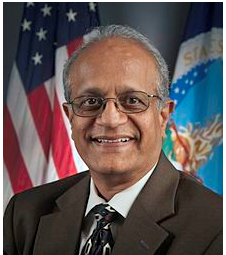
Sonny Ramaswamy, NIFA director
Where are the new research funds going to come from? Farmer-funded commodity checkoffs, which Ramaswamy described as “critically important” to land grants and other university research programs, are one source. Donations from leading crop and livestock companies are also key.
At the same time, newer companies like Caribou Biosciences, TargetGene Biotechnologies, Cibus, Calyxt and Benson Hill Biosystems, funded by venture capital funds, are sprouting up with promises to deliver significant breeding advancements for farmers and ranchers around the globe.
Industry observers say the growth in new start-ups is fueled, in part, by the precision, the lower cost and shorter development time available with innovative gene editing systems like CRISPR.
“Gene editing is a transformative game-changing type of approach that is going to allow us a step increase,” Ramaswamy said.
“Gene editing, gene drive and things like that have really democratized research” so that companies of all sizes can participate, he added. “With gene editing, one can do it in your garage. Now companies are trying to figure out what their best action is.”
Gregory Graff, an associate professor in agricultural economics at Colorado State University, who tracks start-ups in ag technology, agrees that opportunities are opening up for new companies and new types of crops, including some that have lacked research focus in the past.
“For many years now, with transgenic crop traits, the big agricultural business companies with corn and soybeans were the only game in town because of the cost of commercializing,” said Graff.
The whole sweet horticultural sector – everything from tomatoes to sweet corn to grapes, you name it – never “really saw any applications of the technology at all,” he added.
“It was just the ‘billion-dollar crops’ like corn and soybeans that provided a big payoff for research and development,” Graff said.
Changes in technology have dramatically lowered the cost to enter the market, said Brett Morris, a principal with Technology Acceleration Partners (TechAccel).
“This is especially true in ag-biotech, where a range of once-daunting capital requirements have plummeted in cost. The cost of genome sequencing has declined from $100 million per genome in 2001 to approximately $1,000 per genome in 2015,” Morris wrote in a blog for GlobalAg Investing.com.
“Cheap cloud storage now allows companies to host, analyze, and reproduce huge data sets. Computing power has significantly increased and enabled advances in artificial intelligence and machine learning. As a result, companies are observing phenotypic characteristics in the lab versus the field, and continuously improving outcomes by feeding more data to smarter algorithms. And the insights these start-ups are producing are moving into development faster, thanks to high-throughput automation. In simple terms, this means it’s easier to start a company today than ever before.”
Still, much of the basic research starts on university campuses and then, through business incubators, collaborations with other companies and licensing agreements, the research into both agriculture and human health, spreads like a spiderweb – ultimately connecting in myriad directions and levels of investment.
Consider the case of Biochemist Jennifer Doudna at the University of California-Berkeley. She, along with Emmanuelle Charpentier from the University of Vienna and others are widely credited with being the first to propose that CRISPR-Cas9 could be used for programmable gene editing.

Jennifer Doudna, UC-Berkley
In plants, this editing capability can be applied to promote drought tolerance and disease resistance to protect plant health and increase crop yields. It also can provide direct consumer benefits like the removal of food allergens and the improvement of the nutrient composition of foods and oils.
Researchers discovered they could harness CRISPR (Clustered Regularly Interspaced Short Palindromic Repeats) systems to more precisely cut and edit DNA in plant, animal, and human cells. And it didn’t take long to realize that this new technology could potentially be a game changer in providing benefits for both agriculture and human health.
In 2011, Doudna teamed up with researcher Rachel Haurwitz, Martin Jinek, then a postdoctoral researcher, and James Berger, then a professor at UC-Berkeley, to found Caribou Biosciences. The name “Caribou” is a combination of Cas, a term meaning CRISPR-associated, and ribo, as in ribonucleic acid, or RNA. Doudna remains on the firm’s scientific advisory board.
But in addition to working as a professor of molecular and cell biology and chemistry, Doudna and colleagues at Berkeley and UC-San Francisco (UCSF) launched the Innovative Genomics Institute in 2014 to perfect the CRISPR/Cas9 tool and develop new human disease therapies. Some of their early achievements included improving efficiency of gene replacement and a new approach toward a treatment for sickle cell disease. That promising approach generated a $4 million investment from the California Institute for Regenerative Medicine, the Berkeley News reported in 2017.
Armed with significant new funding, IGI, led by Doudna as executive director, relaunched with plans to use a portion of the funding to solicit research proposals in the areas of human health, agriculture and microbial ecology.
Just last month, IGI selected 24 new research projects across three academic institutions (Berkeley, UC-San Francisco, and UC-Davis). The agriculture program area is seeing the largest growth, with the addition of 11 new projects, IGI reported.
In the area of human health, IGI also plans to work with the Bay Area’s Chan Zuckerberg Biohub, a collaboration among UC Berkeley, UCSF and Stanford University launched in 2016 with $600 million in funding from Facebook CEO and founder Mark Zuckerberg and his wife, Priscilla Chan, who is a UCSF pediatrician. Doudna is a member of the organization’s Science Advisory Group.
Researchers anticipate that new precision tools and systems will be crucial in solving human health problems, but in the short term, many of the advancements could apply to agriculture.
“I think there are going to be as many or more applications of CRISPR-Cas9 in plants than there are in the biomedical area,” Brian Staskawicz, a UC-Berkeley professor of plant and microbial biology who will direct the agricultural arm of the IGI, said in an interview with the Berkeley News. “In California alone, we grow 300 different crops, many of them improved by standard cross-breeding, which introduces all sorts of undesired traits along with the one you want. CRISPR-Cas9 allows us to introduce genes with a level of precision that we have not been able to do in the past and potentially cut four to five years off of breeding cycles.”
IGI is also working with crops at risk around the globe, like the cacao beans used to make chocolate. Over half of the world's chocolate now comes from two West African countries: Côte d'Ivoire and Ghana where the cacao trees are at risk from disease and climate change, according to Climate.gov. In an effort supported by food and candy company MARS Inc., IGI scientists are developing CRISPR editing technologies to alter cacao trees that will be resistant to both viral and fungal diseases.
Meanwhile, some of the biggest plant breeding companies for major crops like corn, soybeans and wheat are investing in their own proprietary research as well as collaborating with Doudna and others.
For example, in 2015, DuPont and Caribou Biosciences jointly announced a strategic alliance, allowing both firms to cross-license their respective patent portfolios. As part of the deal, DuPont received exclusive intellectual property rights for CRISPR-Cas technology applications in major row crops, and non-exclusive rights in other agricultural and industrial bioscience applications.
The alliance between DuPont and Caribou involves a multiyear research collaboration with scientists from the two organizations focused on enhancing the breadth, versatility and efficiency of the core CRISPR-Cas toolkit. DuPont also has made a minority equity investment in Caribou to further strengthen the working relationship.
But Doudna and the folks at UC Berkeley aren’t the only game in town when it comes to developing CRISPR and other gene editing tools. In fact, there are ongoing legal disputes over who owns the patent to the technology – and some countries view the patent ownership differently than others.
In May 2012, Doudna and Charpentier respectively filed for patent claims in the U.S. In December 2012, a team led by bioengineer Feng Zhang from the Broad Institute of MIT and Harvard also filed patent claims. But the U.S. Patent and Trademark office reviewed Zhang’s filing first because Broad paid for a fast-track review process. In 2014, the Patent and Trademark office granted the first CRISPR patents to the Broad Institute for showing that the CRISPR system could be used to edit more advanced, eukaryotic cells, including animal and human cells.
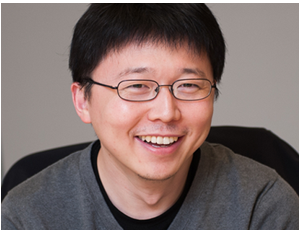
Bioengineer Feng Zhang, Broad Institute
UC-Berkeley asked for an “interference proceeding” to re-assess and determine who was the first to invent the genome editing tool.
However, in February 2017, the US Patent Trial and Appeal Board (PTAB) again ruled that the Broad/MIT group could keep its patents on using CRISPR-Cas9 in eukaryotic cells. In essence, the PTAB said there is no interference between the two groups' patent claims because the patent issued to the Broad/MIT group is sufficiently different from that filed by the UC team, including Doudna and Charpentier who said they had first successfully demonstrated the technology.
The University of California is now appealing this decision. In a brief, the UC team asserted that the PTAB “ignored key evidence” and “made multiple errors” when assessing whether CRISPR/Cas9 gene editing in eukaryotes was an obvious extension of the UC invention.
In response, the Broad Institute said that PTAB’s judgment was supported by substantial evidence and in full conformity with the law. “We are confident the Federal Circuit will affirm the PTAB’s judgment and recognize the contribution of the Broad, MIT and Harvard in developing this transformative technology,” the Institute noted.
Further muddying the patent and legal environment is a recent decision by the European Patent Office (EPO) which revoked the first of several patents obtained by the Broad Institute, citing a lack of novelty.
That decision was heralded by ERS Genomics, which was co-founded by Charpentier.
“We have always felt confident that the Broad’s patents would be overturned in Europe based on lack of novelty in light of the Charpentier/Doudna patent filings, but the simple confirmation of this technical deficiency in the Broad’s priority claims made it unnecessary for the European Patent Office to pursue this line of questioning in their revocation decision,” said Eric Rhodes, CEO of ERS.
“The technical fault was sufficient for the Patent Office to quickly come to a determination that the Broad claims to their earlier priority dates were not legitimate and therefore their claims lacked novelty in light of several publications which predated their allowed priority date.”
For its part, the Broad Institute said the EPO’s decision was based “on a technical formality” and “the decision does not involve the actual scientific merits of the CRISPR patent application.”
“The Broad Institute will appeal the decision to EPO’s Technical Board of Appeal, which is expected to use this case as an opportunity to review and resolve this international inconsistency, not just for CRISPR patents, but for a wider range of European patents and applications that originated as U.S. provisional applications.”
Little wonder then that U.S. agribusinesses are keeping a foot in more than one camp, trying to make sure that innovations and licensing opportunities can continue in as many laboratories as possible.

Neal Gutterson, DuPont Pioneer
For example, DuPont Pioneer and the Broad Institute of MIT/Harvard reached an agreement to jointly provide non-exclusive licenses to foundational CRISPR-Cas9 intellectual property under their respective control for use in ag research and product development at universities and nonprofit organizations for academic research.
"The promise of CRISPR-Cas9 technology in the hands of many will result in a wide array of benefits for the global food supply, ranging from higher and more stable yields of grains, fruits and vegetables for farmers; more nutritious, healthier and affordable foods for consumers; and improved sustainability of agricultural systems for society," said Neil Gutterson, vice president of Research and Development at DuPont Pioneer.
Other major agribusinesses are taking similar approaches, with multiple licensing agreements and investments in precision breeding.
Early in 2017, Monsanto Company announced that it had reached a new global licensing agreement with the Broad Institute of MIT and Harvard for the use of the novel CRISPR-Cpf1 genome-editing technology in agriculture.
“This system has potential to be a “simpler and more precise tool for making targeted improvements in a cell's DNA when compared to the CRISPR-Cas9 system,” the company said in a release. “In addition, the smaller size of the CRISPR-Cpf1 system provides researchers with more flexibility to use the genome-editing technology across multiple crops.”
“Gene editing actually covers a range of technologies that can be used to make precise targeted modifications of genes in the genome,” explains Dr. Larry Gilbertson, a molecular biologist with Monsanto. “We believe that to be successful in this area it will require a combination of technologies and tools and our licensing strategy reflects that.”
Other recent Monsanto investments and joint agreements include:
- A non-exclusive global option and licensing agreement on Dow AgroSciences’ EXZACT Precision Technology. The EXZACT technology, which Dow AgroSciences has developed under an exclusive license and collaboration agreement in plants with Sangamo BioSciences Inc., (now Sangamo Therapeutics Inc.) facilitating the creation of crop varieties and lines having improved traits. An agreement with Nomad Bioscience GmbH, based in Munich, Germany, whereby Monsanto obtained rights to apply Nomad’s proprietary technology to its genome-editing projects. The licensed technology enables more efficient development of edited traits and may be applied across a broad range of genome-editing technologies and project types, Monsanto said.
- An exclusive license to TargetGene’s novel and proprietary "T∙GEE" (Genome Editing Engine) platform to deliver continuous improvements in agriculture. Monsanto also established an equity position in the private Israel-based company.
- A global licensing agreement for the use of South Korean-based ToolGen’s CRISPR technology platform to develop agricultural products.
"It’s one thing to be able to edit but another thing to know what to edit and where to get the most value," adds Gilbertson. "And that requires a lot of knowledge of the genes, the genomes and having the information and the data science. That’s where we have a lot of strength."
Plenty of precision breeding innovation

Jim Carrington, president, Donald Danforth Plant Science Center
Given all of the various investments and licensing agreements, it's difficult to identify just one industry leader at the top of the precision breeding space – partly because investors range from small individual start-ups to large agribusinesses which may be investing or partnering in start-ups and technology companies on their own.
For example, Syngenta expanded its own direct investment vehicle, Syngenta Ventures, in 2009, to become one of the first venture capital teams dedicated to the agricultural space. Monsanto launched its own Monsanto Growth Ventures to invest in promising new ventures dealing with agricultural productivity, digital agriculture and biologicals. And Bayer’s LifeScience Center (BLSC), operates as a strategic innovation unit within the company to uncover, encourage and activate fundamental breakthroughs by creating or partnering with other companies.
“Here’s the thing about gene editing. Everybody is using it. It is a ubiquitous tool in any company that is doing crop improvement. It’s a ubiquitous tool in all research institutes and universities that work on or have a focus on plant science,” said Jim Carrington, president of the Donald Danforth Plant Science Center in St. Louis. “But everyone uses it, because the tools are available to everyone and they’re simple to use. And they work really well. So, it’s hard for me to say who the leaders are.”
Several venture capital and research firms are tracking the leading firms and their interrelationships. For example, TechAccel is a venture and technology development organization which tracks both the plant and animal investment landscapes. As can be seen from the diagrams below, gene editing is just one part of a much larger “pie” of technological advancements underway.
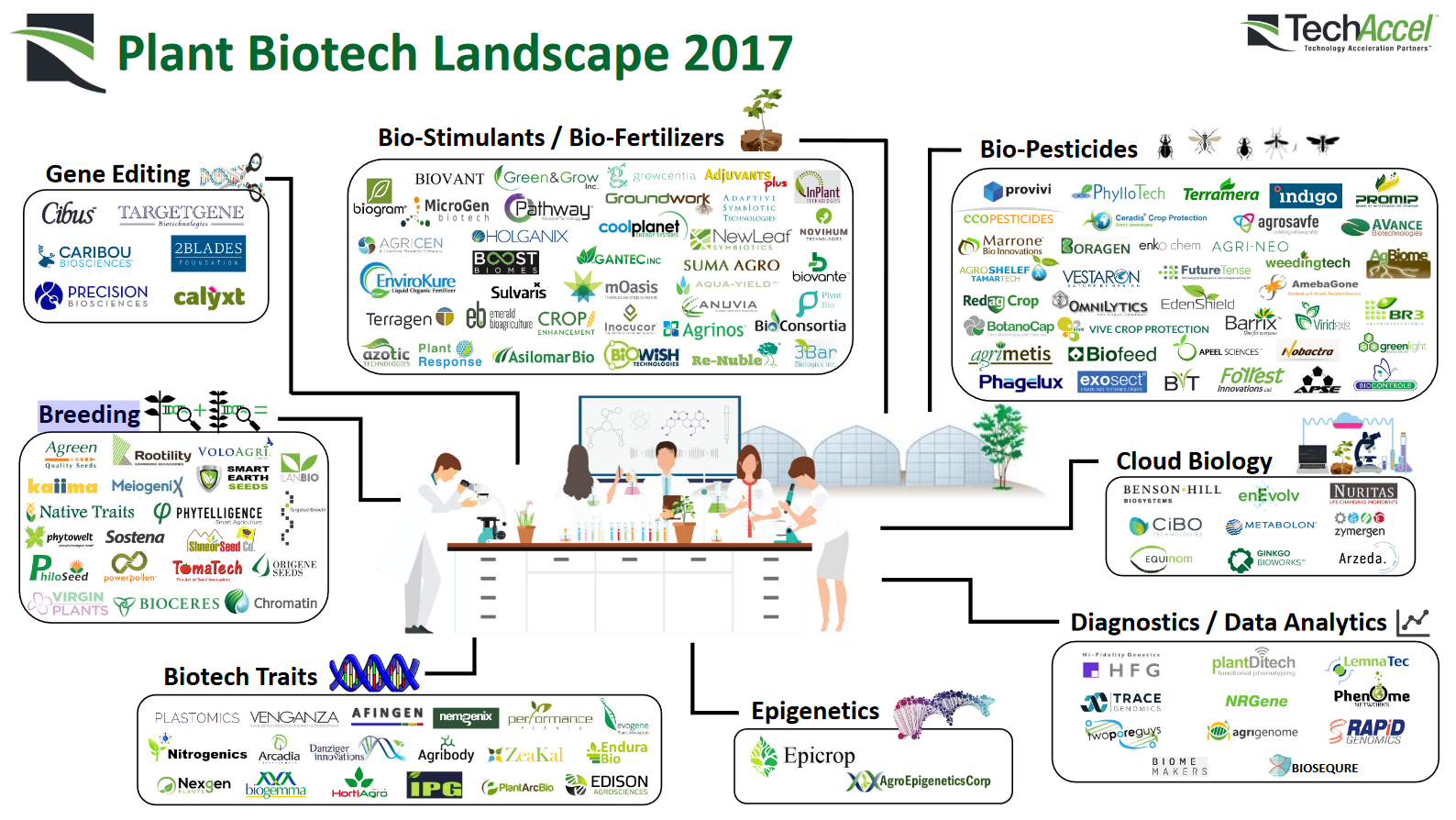
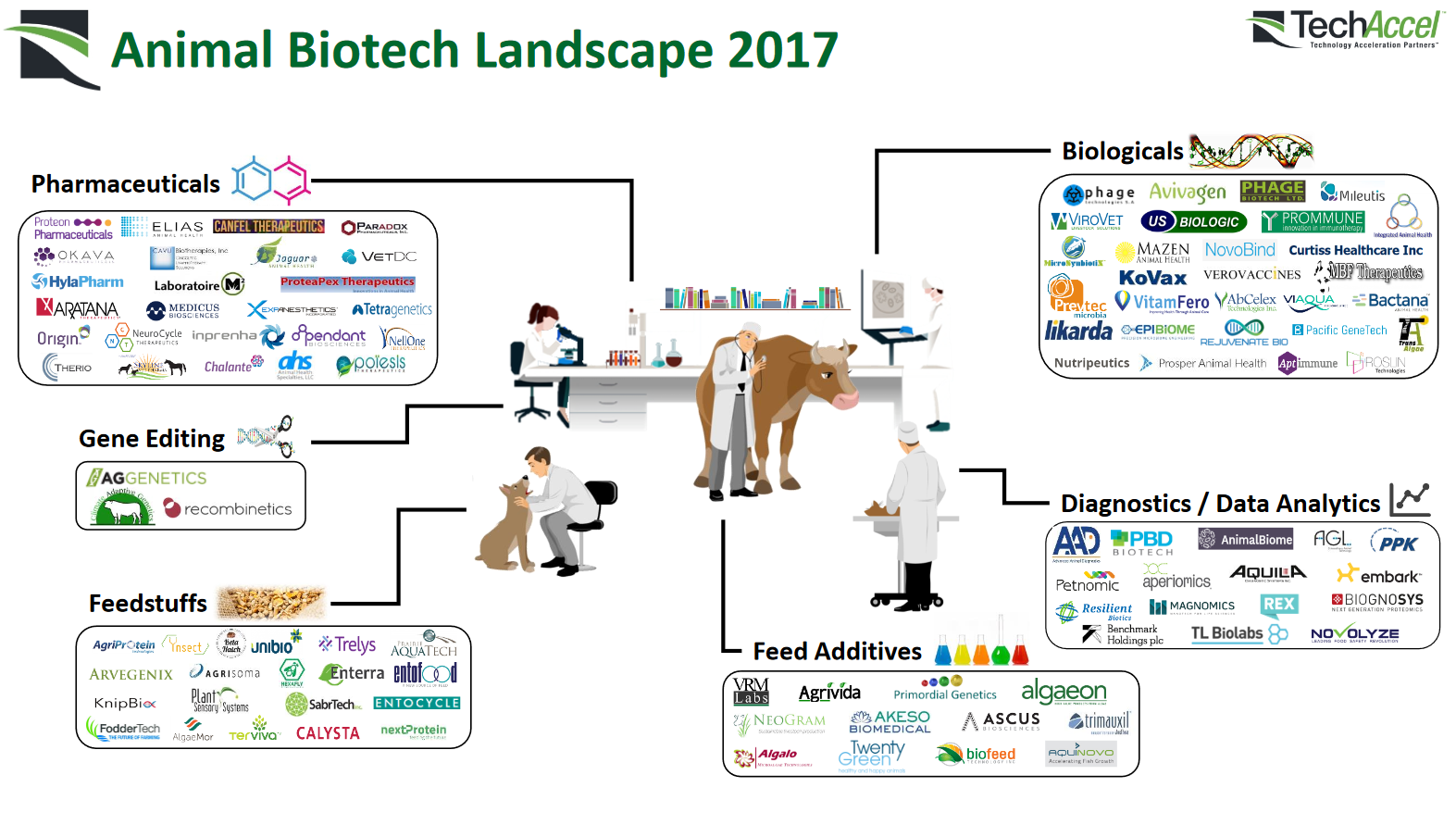
Even though there’s no shortage of investors and firms looking to see which technologies are likely to deliver the next financial blockbuster, there have been shortages of investment funds for ag tech at some entry levels, said TechAccel’s Brett Morris. It’s a funding gap that he noticed early in 2017, when he was approached by several CEOs seeking additional funding for their start-ups.

TechAccel's Brett Morris
Morris said he noticed agtech-angel/seed funding was recently on the rise, while more valuable Series A funding showed a sharp decrease in 2016 from the previous year.
“This is nothing out of the ordinary for venture professionals, as we see hundreds of deals come across our desk annually. These conversations, however, were different from the previous year. Most of the entrepreneurs were struggling to find investors with an appetite for early-stage risk,” Morris wrote in a blog for GlobalAgInvesting.com.
“More start-ups competing for a limited amount of funding at the next stage presents a problem for many founders,” he added. There were also more entities helping start-ups get established, as AgFunder reported in their 2016 Annual Report (See below).
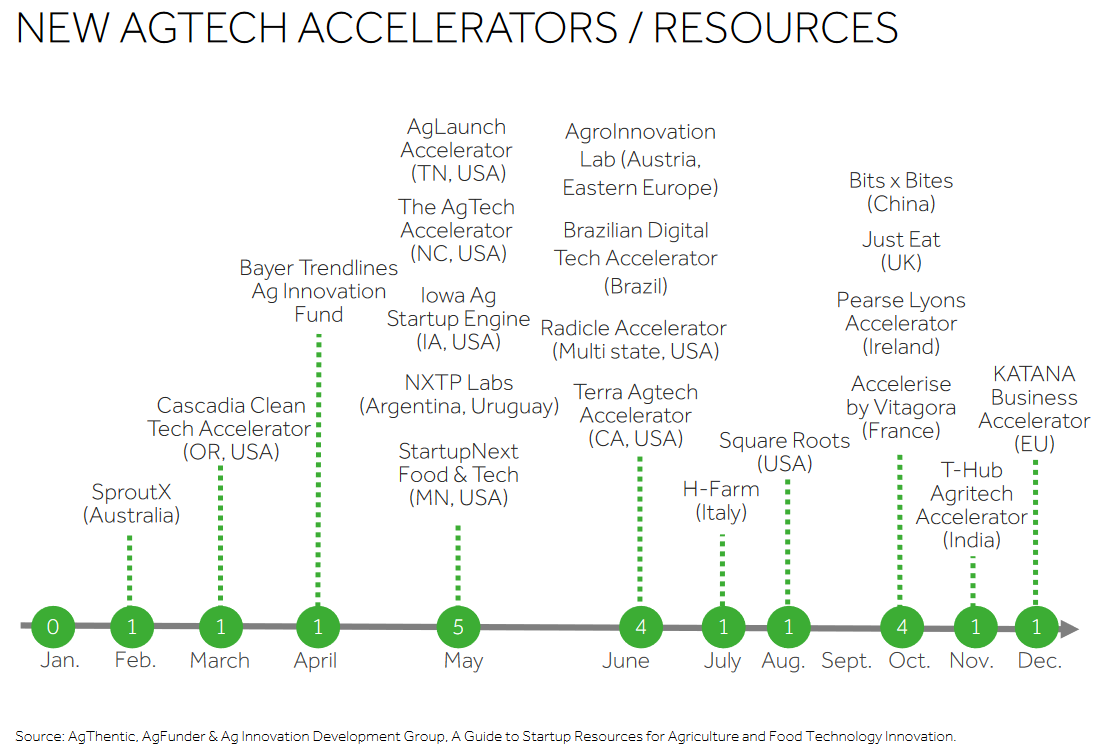
Another issue: Morris said that “generalist investors and individuals tend to shy away from early-stage risk if they don’t understand the industry or underlying science.
“If generalist funds are hesitant to back a play because they don’t understand the science behind it, then companies that can perform financial and scientific due diligence have an advantage,” Morris said.
“Corporate venture models, such as Monsanto Growth Ventures and Syngenta Ventures, can efficiently de-risk opportunities because they have large R&D departments and scientists to help with diligence. They also have large-scale plots of land to perform high-powered statistical proof-of-concept studies to validate technologies. And by providing exit opportunities and ongoing business relationships with the start-ups in which they invest, these corporate ventures are able to further reduce risk.”
Who has the IP?
Another technology research firm that specializes in patent licensing and litigation, iRunway, recently analyzed 4,336 IP (Intellectual Property) assets in CRISPR filed over the last 20 years across the globe, identifying leading patent holders and focus areas of development.
In iRunway’s recent report, they found that research related to genome editing involving zinc finger nucleases (ZFNs) and TAL effector nucleases (TALENs) remained the primary area of focus until 2012. But that changed with new research and publication of three studies in January 2013 – demonstrating CRISPR-Cas9 to be an efficient tool to edit the genomes of human cells. That’s when research involving CRISPR Cas9 became a revolution, iRunway wrote.
Research publication and patenting filing activity describing CRISPR gene editing increased by leaps and bounds after those studies were published but has declined in the last two years.
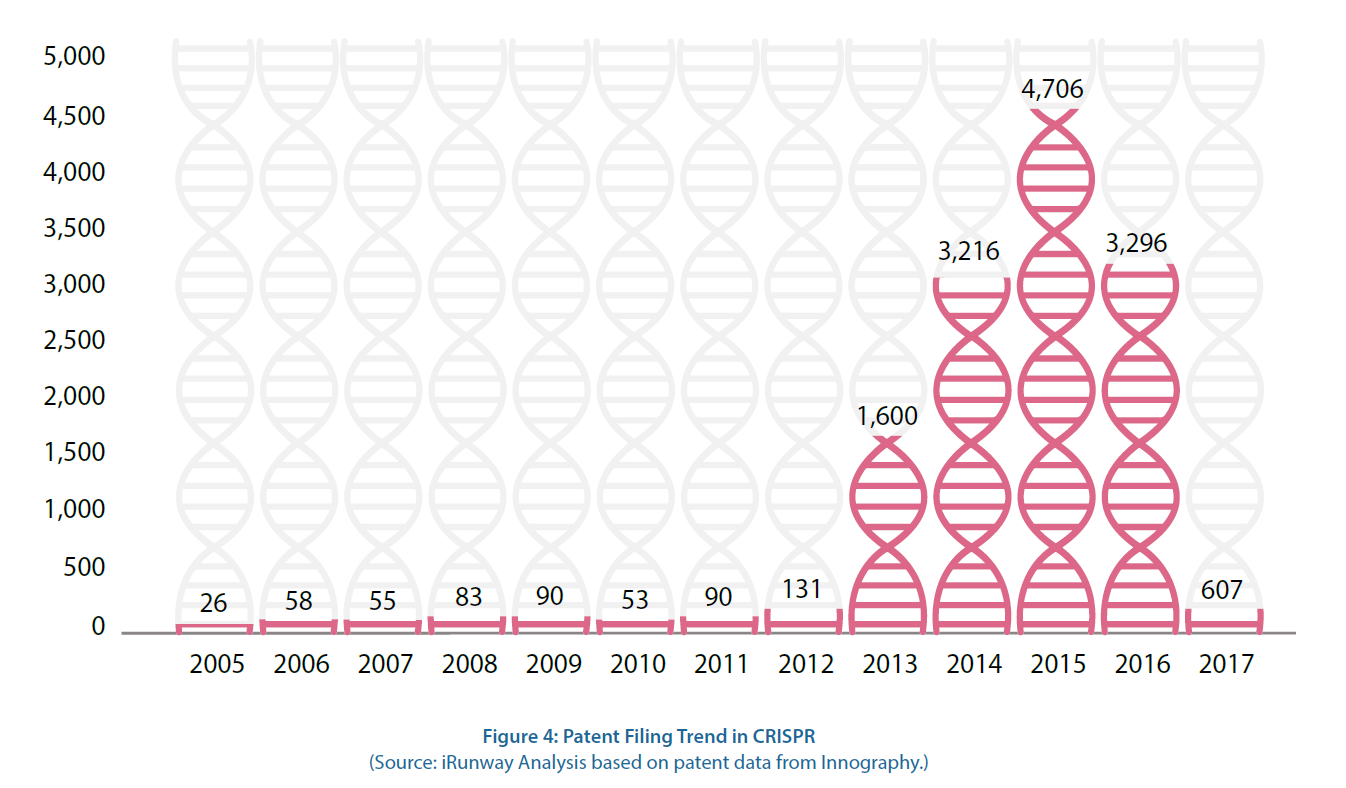
iRunway’s study also found DowDuPont leading the CRISPR global patent landscape with 514 IP assets. This includes 216 patents filed by Dow Agrosciences (a wholly owned subsidiary of Dow Chemical Company). DuPont filed 122 IP assets, while its subsidiaries Pioneer Hi-bred International Inc. and Danisco filed 82 and 69 patents, respectively.
Harvard University stood second with 343 IP assets, of which it filed 231 patents independently and 112 patents filed in collaboration with Broad Institute, with most of its patents co-assigned to Massachusetts Institute of Technology and Harvard University.
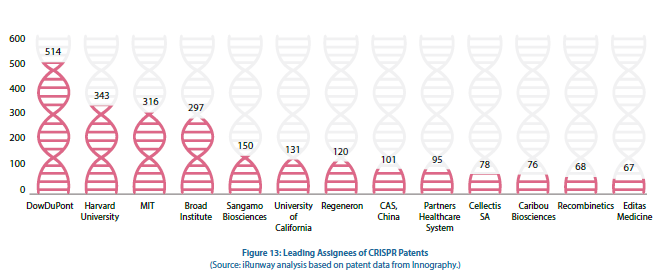
The report also noted that the technology areas of focus of all the leading assignees was very diverse. While DowDuPont has focused its research in discovering bacterial sources for CRISPR array, a large share of Broad Institute’s R&D is regarding engineered guide RNA and delivery vectors. And there is a lot of diversity of IP assets across the globe.
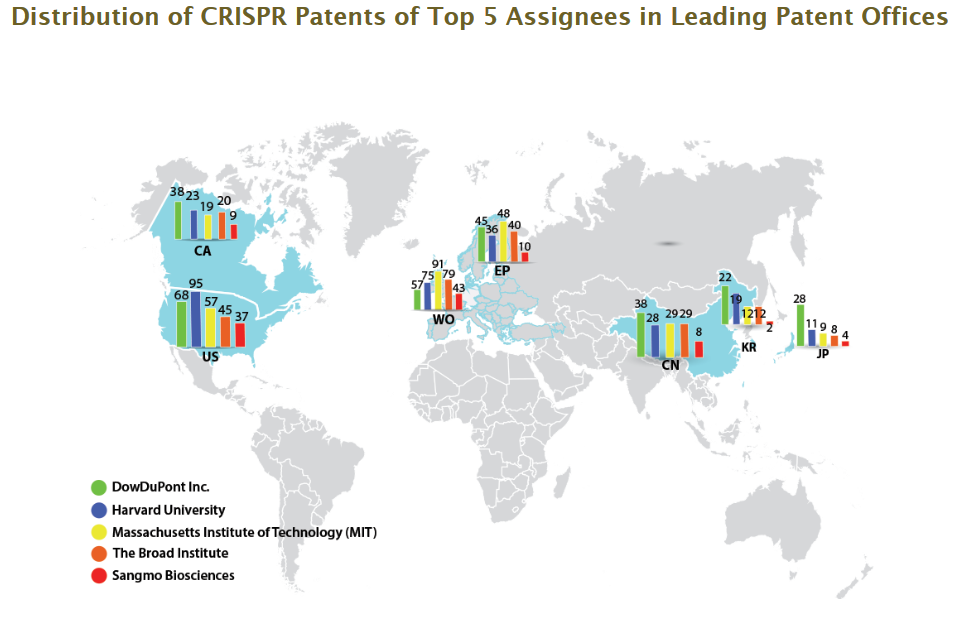
And when it comes to the inventors who are leading the CRISPR revolution, iRunway reported that the Broad Institute’s Feng Zhang is clearly ahead in terms of intellectual property assets, with 355.
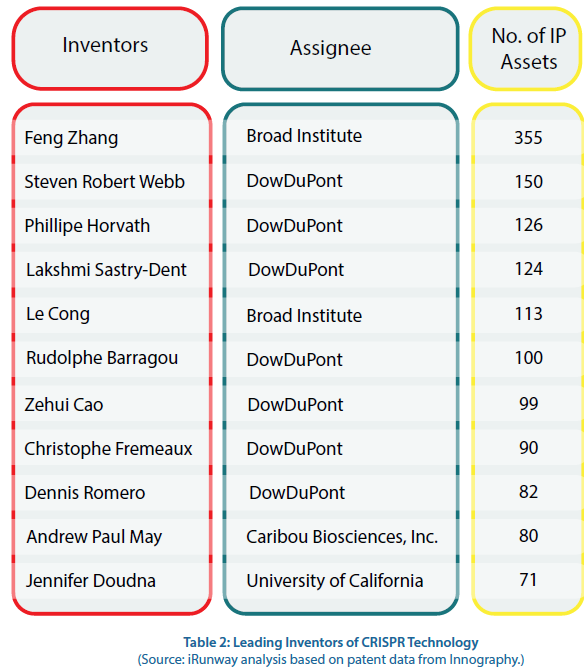 These inventors obviously have a head start, but many others are expected to jump into the precision breeding community.
These inventors obviously have a head start, but many others are expected to jump into the precision breeding community.
Citing market research, iRunway predicts that the genome-editing/genome-engineering market will double to $6.28 billion by 2022 from $3.19 billion in 2017, at a compound annual growth rate of 14.5 percent.
“This will be driven by rising government funding, university research, growth in the number of genomics projects, quest for finding sustainable treatment for infectious diseases and cancer, increasing production of genetically modified crops and growing application areas of genomics,” iRunway’s report noted.
But others aren’t so sure that U.S. government funding will play much of a role. Already, U.S. federal investment has been declining while countries like China are dramatically ramping up their research efforts.
“America is still ahead of the game, but we are reaping the investments made over the last many years,” said NIFA’s Ramaswamy. “The Chinese invest between 5.5 and 6 percent of their gross domestic product (GDP) on public research. In the ag and food space in America, it’s less than 2 percent of GDP. So, the Chinese and others are surpassing us.”
That’s a trend that many land grant universities and NGO’s hope to reverse in the upcoming farm bill debate, as they advocate for more federal research dollars. Last fall, over 60 organizations signed a consensus document, calling for an annual $6 billion goal for USDA food and agricultural research over fiscal year 2019 to 2023.
“The U.S. has been second to China in total public agricultural research funding since 2008. By 2013, China’s spending on public agricultural R&D became nearly double that of the U.S.,” the letter noted. “Though public funding for other forms of domestic research has risen dramatically, the U.S. agricultural research budget has declined in real dollars since 2003. This is an area of R&D where return on investment is estimated at 20 to 1.”
Carrington, with the Danforth Center, agreed that more federal funding is needed for the U.S. to remain competitive.
“Back to the middle of the 20th century, research and development was largely in the public domain,” said Carrington. “Now, while there still may be some public activity in corn improvement, most of the corn is going to be bought from the big agribusiness companies.
“It’s really a shifting landscape of roles,” he added. “At the very fundamental research level, it’s still being done in universities and research institutions like the Danforth Center.
“But then in turning those innovations into actual products that can be sold, the role of the private sector has really increased.”
Yet, Carrington said he doesn’t want to “give the impression that there’s not an extremely important role for R&D at the federal level.
“Ultimately that’s what fuels innovation on the farm.”
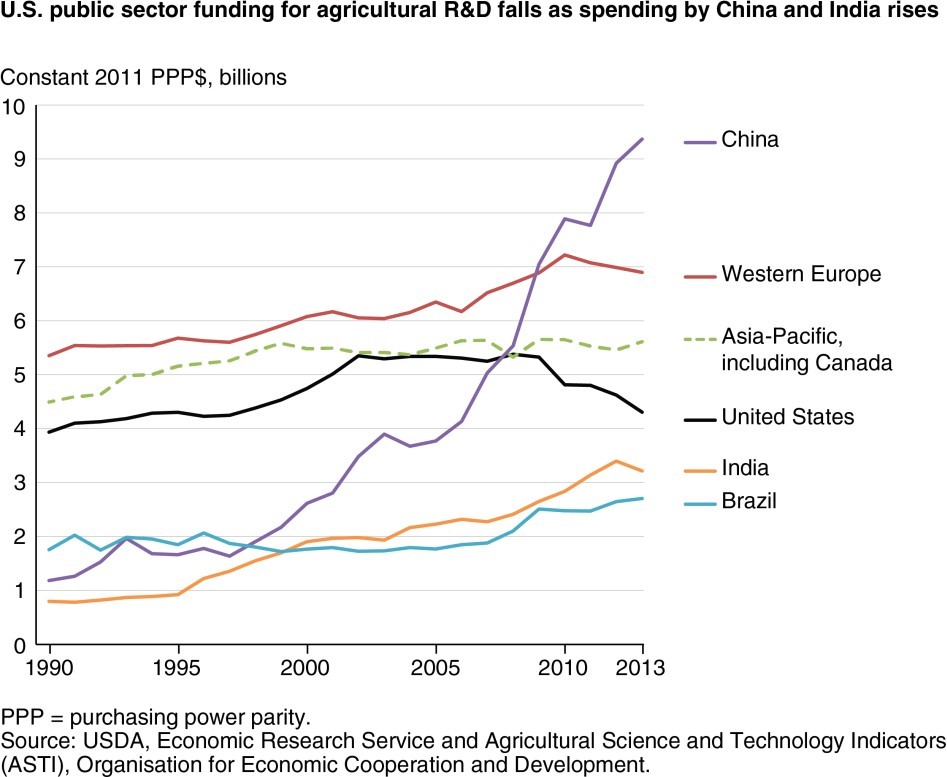
#30
For more news, go to: www.Agri-Pulse.com


